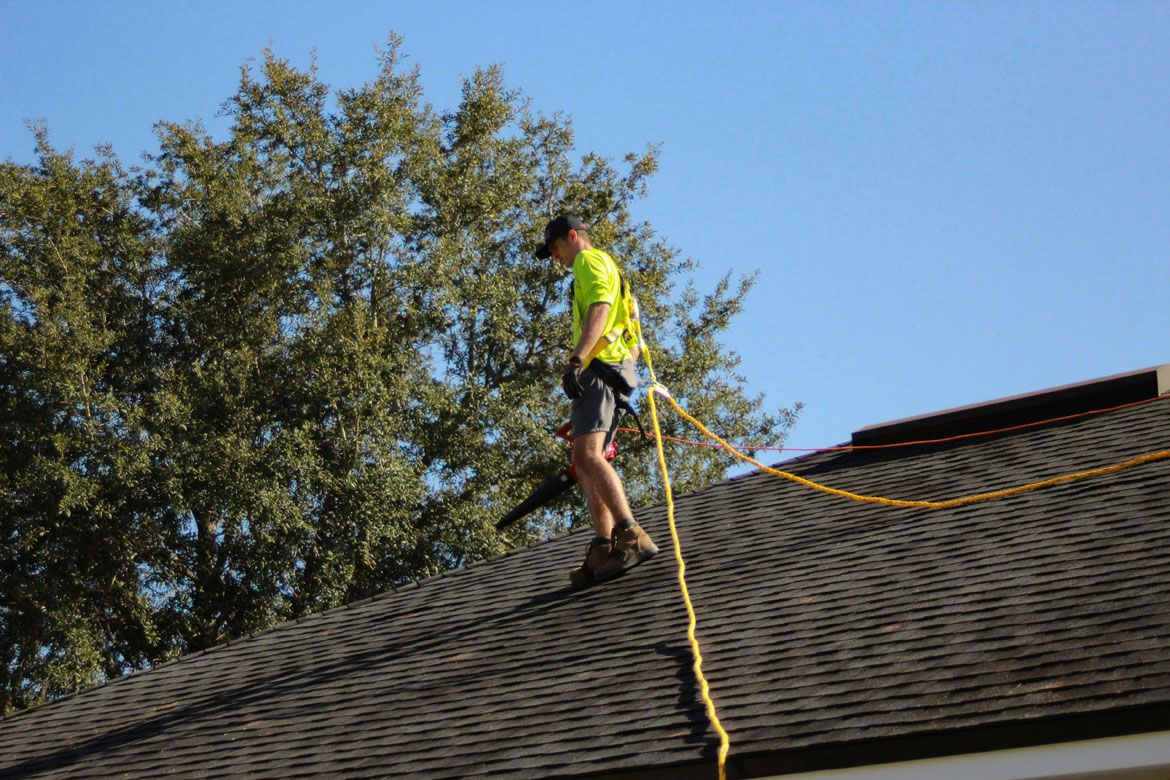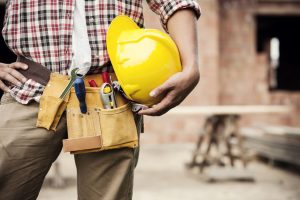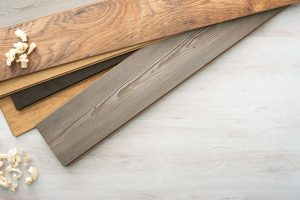Commercial Roof Inspections: What to Know and What is Changing
Commercial Roof Inspections, as you may or may not know, are an absolutely essential part of looking after your commercial roofing investment.
To kick things off, we will be covering just why these inspections are so important. Then, we'll get into the nitty-gritty of industry standards and common practices you should know about. We'll also touch on what might be changing in the world of commercial roof inspections.
Finally, we'll wrap up with some key signs to keep an eye out for and share some reliable sources to stay in the loop. Come along as we break down commercial roof inspections in a simple and practical way, but without leaving out the key facts.
Roofing Inspections: A commercial investigating necessity
Protecting Your Investment
Commercial properties aren't just structures; they're substantial investments vital to businesses. Their worth goes beyond physical space, impacting the financial core of enterprises.
Neglecting regular roof checks poses financial threats, jeopardizing the stability of these investments. Small oversights today can lead to hefty repair bills, impacting both the property's
financial standing and the business it supports.
Consider actual scenarios where thorough roof inspections could have prevented costly issues—like water damage or structural compromises. These examples underscore the practical advantages of proactive measures, highlighting the role inspections play in averting unnecessary expenses.
Ensuring Safety and Compliance
Regular roof inspections play a crucial role in prioritizing occupant safety and adhering to building codes. By promptly identifying and addressing potential risks, inspections contribute to creating a secure environment. Compliance with codes not only ensures the well-being of occupants but also shields property owners from potential legal issues.
Maintaining a safe roof involves navigating legal and liability considerations. Neglecting inspections may expose property owners to legal action and financial responsibilities in case of accidents or injuries linked to a compromised roof. Actively upholding safety standards through commercial roof inspections acts as a proactive strategy to mitigate these risks.
Falling short of safety regulations and building codes can lead to serious repercussions. This includes fines, legal disputes, and potential business closures. Highlighting the significance of compliance, regular inspections act as a protective shield, reducing the chances of facing detrimental consequences and ensuring an environment that is both safer and legally sound.
Prolonging Roof Lifespan
Maintaining the longevity of commercial roofs hinges on routine inspections. These checks play a vital role in catching and resolving minor issues before they escalate into major problems, effectively preserving the roof's lifespan. It's a cost-effective strategy that emphasizes the tangible benefits of staying ahead through proactive inspection practices.
What We Know About Roof Inspections
Current Standards and Practices
When it comes to commercial roof inspections, staying in line with current standards and incorporating best practices is pivotal. This ensures a detailed approach, safeguarding the structural integrity and extending the life of roofing systems.
Key Components Assessed During Inspections:
- Roofing Materials: Scrutinizing the quality and condition of materials employed, such as asphalt, tile or metal roofing.
- Drainage Systems: Evaluating the efficiency of water runoff mechanisms.
- Flashing: Checking for proper installation and signs of potential deterioration.
- Insulation: Assessing insulation effectiveness and identifying possible issues.
Hiring Professionals for Thorough Evaluations:
Relying on professional inspectors is of utmost importance for a comprehensive assessment. Their expertise enables them to spot subtle signs of deterioration that might be overlooked, aligning with current standards. This commitment to precision ensures a thorough evaluation, offering property owners actionable insights. Beyond identifying existing issues, professional inspections provide a proactive plan for maintaining roofs at peak performance, preventing potential problems, and promoting long-term durability.
The Role of Technology in Inspections
In the realm of commercial roof inspections, technology, with tools like drones and thermal imaging, has sparked a transformative shift, significantly boosting both accuracy and efficiency. These innovations don't just make inspections smoother; they deepen our understanding of a roof's condition, allowing for more informed decisions.
Commonly Used Tools and Methods:
- Drones: Taking flight, these aerial wonders give inspectors access to tricky spots, capturing detailed images and videos to thoroughly evaluate the roof.
- Thermal Imaging: This tech acts like a detective, revealing temperature variations that pinpoint potential issues such as water leaks or insulation gaps.
Successful Technology Integration Examples:
- Automated Analysis Software: Smart software automates data analysis, speeding up and refining issue identification.
- GPS Technology: Integrated tracking systems provide precise documentation of inspection locations and findings.
- Cloud-Based Platforms: Storing inspection data on the cloud ensures easy access and collaborative sharing among stakeholders. These instances showcase how technology isn't just a tool; it's a game-changer, making commercial roof inspections more effective and decision-making more insightful.
What Is Changing For Roofing Inspections
In the ever-changing realm of roofing inspections, industry talk hints at a change coming, if not already here.
Rumors suggest insurance companies may go about making roof replacements more of a mandate after a decade, sparking increased interest from investors seeking inspections that align with potential new criteria.
We have heard different opinions from all corners of the industry, but a lot of people are seeing a lot of the same things. Brandon Foote from Advanced Roofing and Construction, LLC stated that “Some insurance companies are pushing back on policy holders who are filing claims for roof replacements”.
This can be described as a product of several different things. Brandon brought up a great point that, with some insurance policies changing hands multiple times and previous owners neglecting to maintain the property, that there are “excessive claims being filed every year, which puts a burden on the insurance industry”.
One way that the team at Advanced is predicting that insurance companies respond is by “switching policies from RCV to ACV after the first 10 years”, essentially lifting some of the financial liability that rests with the insurance companies by going off of “actual value” and not “replacement value”.
With all that being said, the fact of the matter is that things are likely going to need to change. Brandon stated it best, that “One thing is for sure, storms and deductibles are on the rise and the current model is not sustainable”.
Emerging Trends and Developments
When it comes to commercial roof inspections, there's a buzz around recent developments and emerging trends. Notably, the spotlight is on sustainable roofing solutions and the adoption of cutting-edge technologies, reshaping how inspections are done.
Evolving Industry Standards and Technologies:
Industry standards are on the move, adjusting to the times. Exciting technologies like advanced drones and AI-driven analysis are taking center stage, promising faster and more precise issue identification during inspections.
- Drone Technology: Offering detailed aerial assessments.
- AI-Driven Analysis: Streamlining issue identification for quicker insights.
Sustainable Solutions: A growing focus on eco-friendly roofing materials.
Potential Impact on Property Owners and Investors:
These changes matter to property owners and investors. Embracing sustainability could boost property value, while advanced technologies ensure more thorough inspections. Staying in the loop with these trends positions stakeholders to make savvy decisions in the ever-evolving world of commercial roofing.
Sustainable Roofing Solutions
Sustainability is taking center stage in the dynamic world of commercial roofing, reflecting a growing environmental consciousness. This shift is evident in a commitment to adopt eco-friendly solutions and practices.
Eco-Friendly Roofing Materials and Practices:
- Green Roofing Materials: More and more, we're seeing a move towards materials with minimal environmental impact, like recycled or recyclable options.
- Vegetative Roofing: Another rising trend involves incorporating vegetation on rooftops, not just for aesthetics but also for insulation and improved air quality.
Influence on Inspection Processes:
Sustainability considerations are not just about materials; they're shaping inspection processes too. Inspectors are now assessing the environmental impact of roofing systems, ensuring they align with sustainable practices. This broader approach ensures that commercial roofs not only meet functional standards but also contribute positively to the environment
What to Look Out For
To spot changes in commercial real estate insurance, watch for shifts in policy terms, premium rates, and coverage requirements. Stay tuned to industry news, regulatory updates, and discussions among insurance professionals for valuable insights. These cues serve as important guides, helping you anticipate and navigate shifts in the dynamic landscape of commercial real estate insurance.
Conclusion
In summary, commercial roof inspections are key to safeguarding your investments and ensuring long-term resilience. Take action by prioritizing regular inspections to detect issues early and fortify your roofing systems. Stay proactive, stay informed about industry changes, and adapt your approach accordingly. By being vigilant today, you not only protect your investment but also position yourself for informed decision-making in the ever-changing commercial roofing landscape. Your commitment to proactive measures ensures a more robust and sustainable future for your commercial properties.








